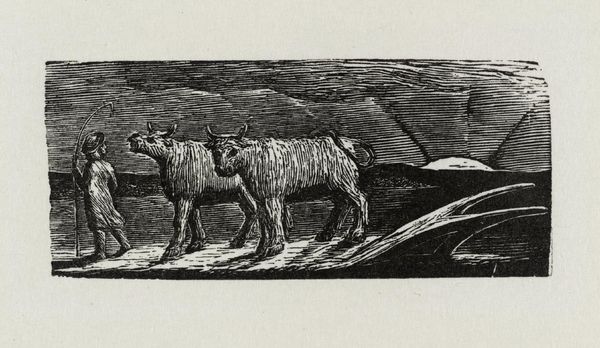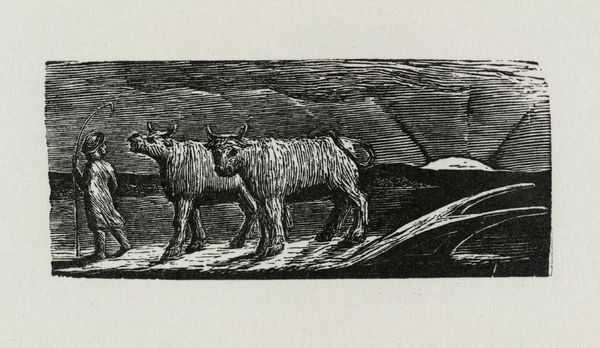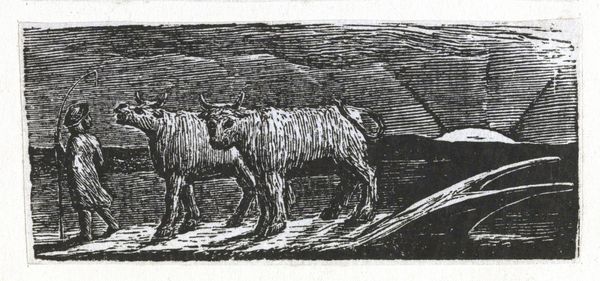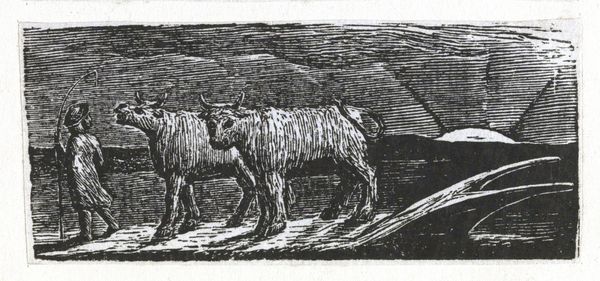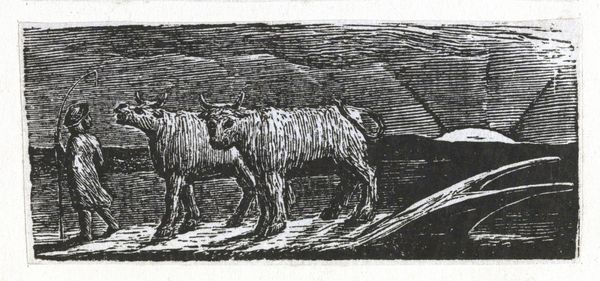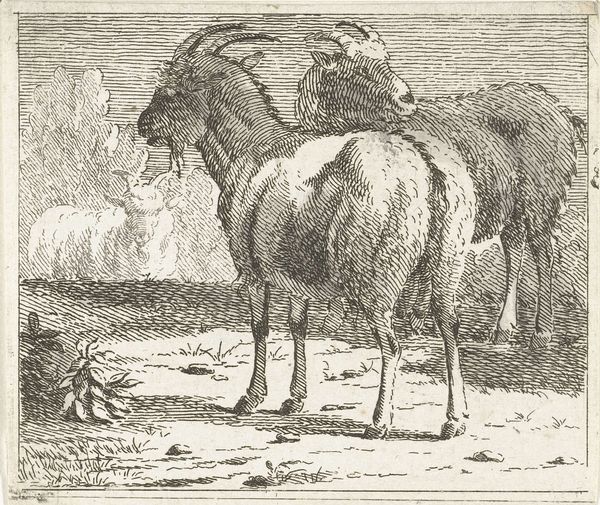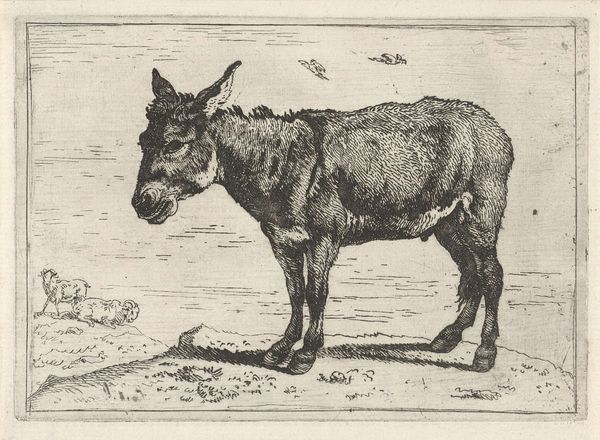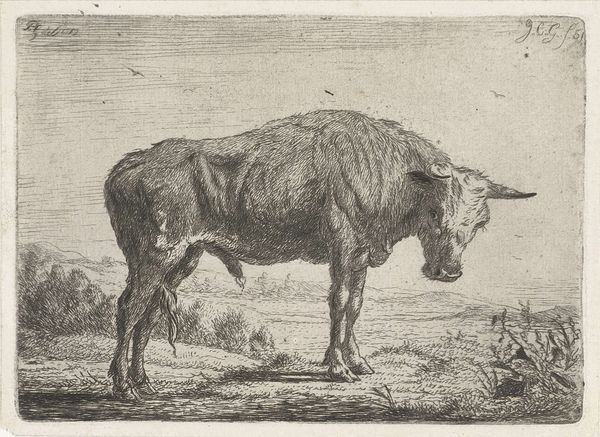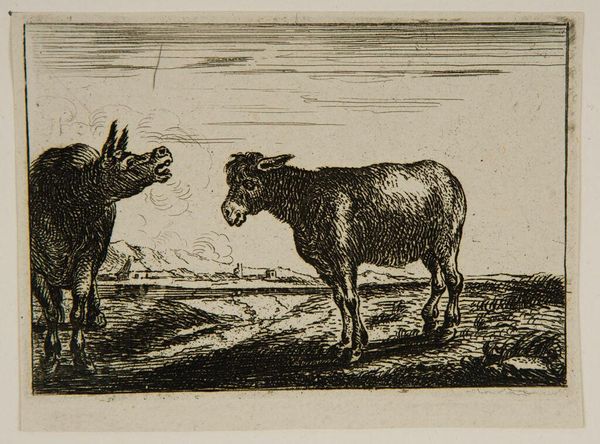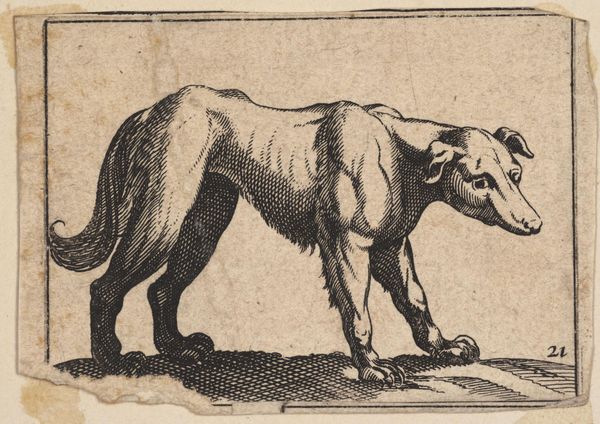
print, engraving
# print
#
pen illustration
#
pen sketch
#
landscape
#
figuration
#
romanticism
#
engraving
Dimensions: height 33 mm, width 78 mm
Copyright: Rijks Museum: Open Domain
This is a relief etching by William Blake, made sometime in the late 18th or early 19th century. Blake was a master printmaker. He didn’t use traditional materials or techniques. Instead of the standard process of incising lines into a metal plate, he developed his own method of relief etching. This involved drawing his design directly onto the plate with an acid-resistant substance, then etching away the surrounding areas to leave the design raised. This labor-intensive process allowed Blake to combine text and image on the same plate. He could control every aspect of the final print. Looking closely, you can see how the etched lines create a sense of texture and depth, from the rippling muscles of the oxen to the rugged landscape. The stark contrast between light and shadow adds to the image's dramatic impact, emphasizing the daily labor of rural life. By understanding the making process and the context in which it was created, we can appreciate Blake's innovative approach to printmaking. He challenges traditional notions of artistic production.
Comments
No comments
Be the first to comment and join the conversation on the ultimate creative platform.
